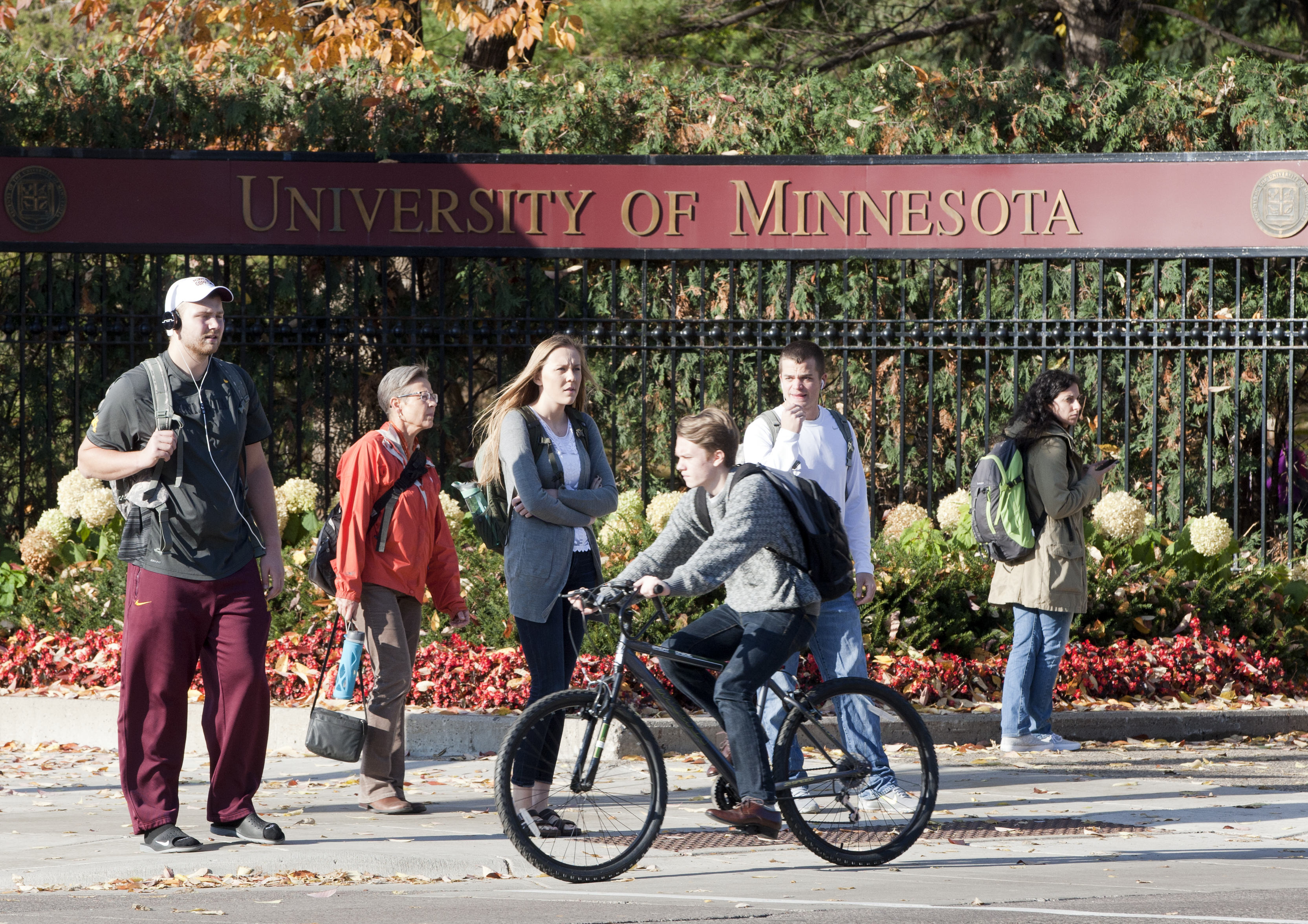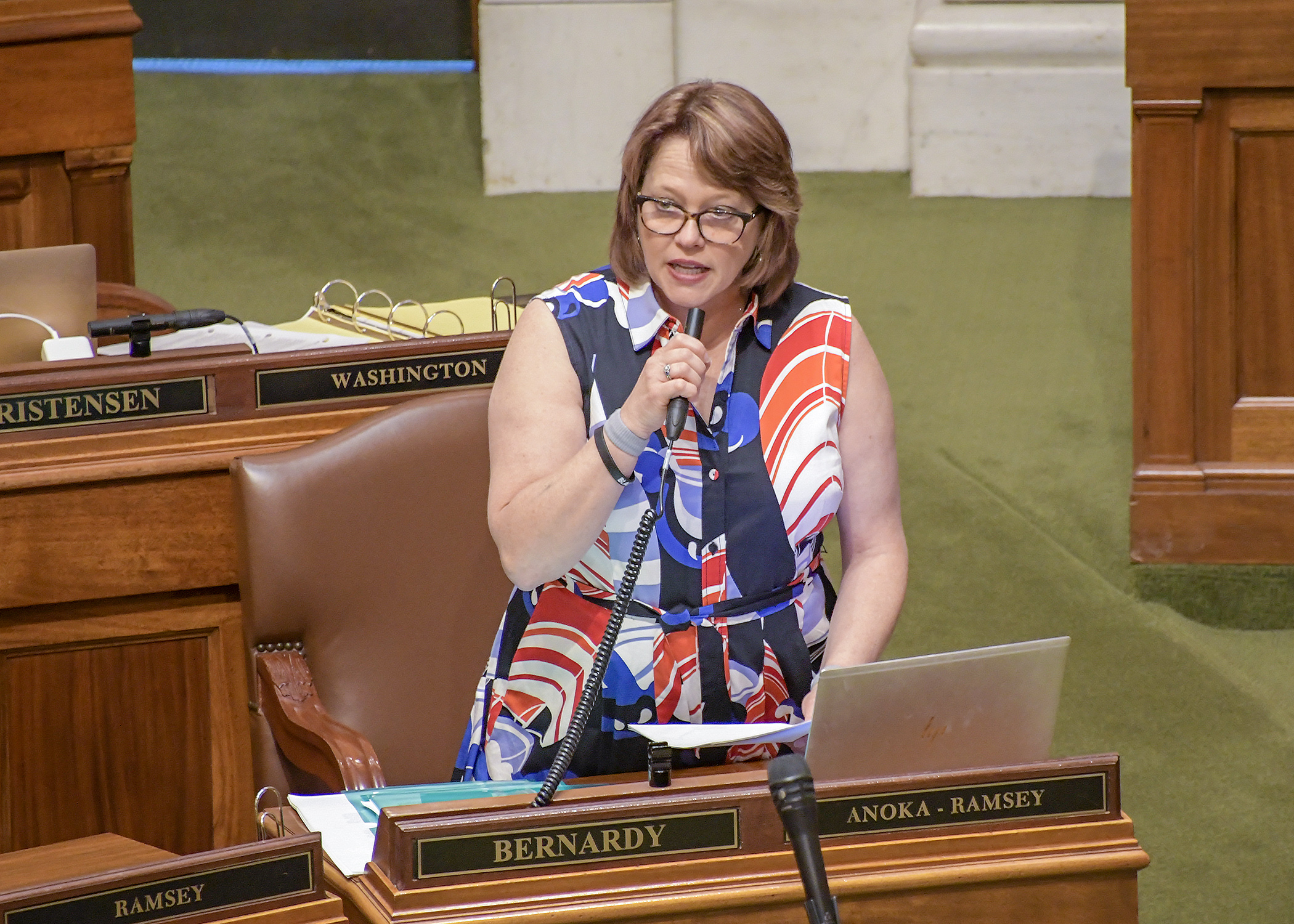Omnibus higher education bill joins Saturday night passing party

Like a heavy rain after a heat wave, budget bills started bursting forth Saturday night after three days of House Republican filibusters, one after another gaining approval. As the clock struck midnight, the omnibus higher education finance and policy bill became the third of the night.
Sponsored by Rep. Connie Bernardy (DFL-New Brighton), SSHF7 was approved 71-57 by the House. It next goes to the Senate where Sen. David Tomassoni (I-Chisholm) is the sponsor.
The $3.51 billion bill would cap tuition increases for Minnesota State students at 3.5% over the next two academic years, increase funding for both the Minnesota State and University of Minnesota systems, and fund the state’s financial aid programs, which are administered by the Office of Higher Education.
“All Minnesota families deserve the opportunity to access a world-class education, no matter where they live, what they look like,” Bernardy said. “We had three key elements in mind as we put this student-centered bill together. To support student needs now and in the future, improve opportunities for all students using an equity lens, and ... tackle the challenge of rising costs and student debt.”
 Rep. Connie Bernardy presents SSHF7 during Saturday's House Floor session. Photo by Andrew VonBank
Rep. Connie Bernardy presents SSHF7 during Saturday's House Floor session. Photo by Andrew VonBankUnder the bill, the higher education budget for the 2022-23 biennium would include $1.58 billion for the Minnesota State system (45% of the higher education budget), $1.39 billion to the University of Minnesota (40%), and $546 million to the Office of Higher Education (about 16%). The Mayo Foundation would receive $2.7 million for its education programs.
The bill would also require institutions to provide notice of impending closure, expand the “Hunger-Free Campus” designation to most institutions in the state, and require the Minnesota State system to expand credit for prior learning to include as many forms of work-based experiences as possible.
Rep. Marion O'Neill (R-Maple Lake) voiced several objections to the bill over the course of 10 hours of debate spanning three days. She particularly disliked how the completed bill was first presented to the House Higher Education Finance and Policy Committee in an informational hearing on June 9.
“I had a lot of questions, because this agreement didn’t look like the House bill, it didn’t look like the Senate bill,” O’Neill said. “We didn’t hear from the university, we didn’t hear from Minn. State, we didn’t hear from the students that it affects. We heard from students throughout the process, but they didn’t get to weigh in on the final agreement, nor did Minn. State nor the University of Minnesota.”
The only amendment adopted merely corrected a reference number within the bill. Three other proposed amendments were not adopted, another ruled out of order. Most focused upon safety on the University of Minnesota’s Twin Cities campus.
For almost three hours, the debate became a public safety discussion after a Friday shooting incident left five with reportedly non-life-threatening injuries near the campus.
Related Articles
Search Session Daily
Advanced Search OptionsPriority Dailies
Speaker Emerita Melissa Hortman, husband killed in attack
By HPIS Staff House Speaker Emerita Melissa Hortman (DFL-Brooklyn Park) and her husband, Mark, were fatally shot in their home early Saturday morning.
Gov. Tim Walz announced the news dur...
House Speaker Emerita Melissa Hortman (DFL-Brooklyn Park) and her husband, Mark, were fatally shot in their home early Saturday morning.
Gov. Tim Walz announced the news dur...
Lawmakers deliver budget bills to governor's desk in one-day special session
By Mike Cook About that talk of needing all 21 hours left in a legislative day to complete a special session?
House members were more than up to the challenge Monday. Beginning at 10 a.m...
About that talk of needing all 21 hours left in a legislative day to complete a special session?
House members were more than up to the challenge Monday. Beginning at 10 a.m...